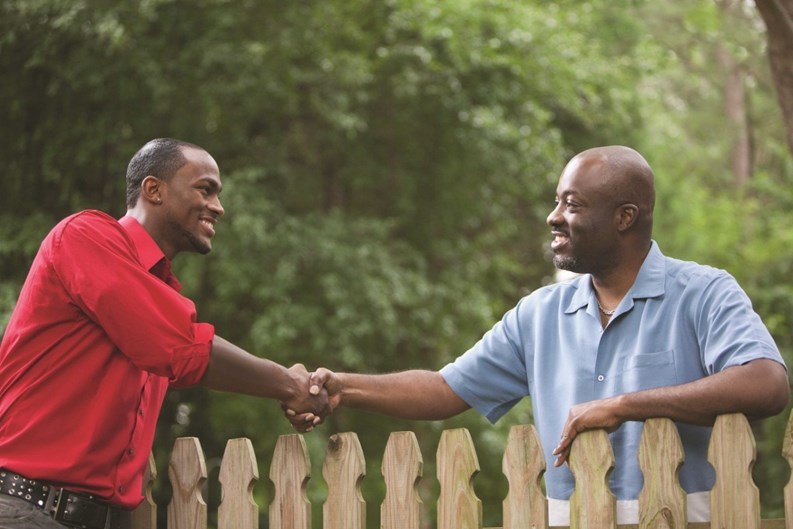In densely-packed urban environments and sprawling suburban developments, people can often feel isolated despite living in close proximity to their neighbors. While high-rise residential buildings put many people and families literally on top of the other, and some HOA residents are separated from their neighbors by just a privacy fence, living side-by-side doesn’t automatically turn a group of people into a community; sometimes it even has the opposite effect.
Lives are busy and schedules hectic, and the last thing many people want to do when they’re at home is to socialize with their neighbors. Building a sense of community in a co-op, condo or HOA is valuable, however—it creates a network of communication and support among residents as well as between residents and board members—and this ultimately improves the quality of life within the community as a whole.
If a sense of community has value—both real and perceived—what is the best way to achieve this network of support and communication? What steps should an HOA take to foster this intangible benefit? What, if any role, should property managers play in building community awareness? What can busy residents contribute to improving the quality of life in the place they call home? Read on to find out.
Embracing Benefits
Audrey Davis-Stok, the lifestyle director for the Del Webb homeowner association located on Great Island in Plymouth, Massachusetts, coordinates a wide variety of clubs, special interests groups and seminars for the community’s 1,000 residents.
“What makes this particular HOA unique is that we are a Del Webb community, so we foster a concept of lifestyle programming,” she says. Del Webb is one of the nation’s leading builders and focuses on developing active adult 55-and-over communities. “We have charter clubs and those are clubs that are voluntarily run by residents. They provide an abundance of activities and events. We have an activities club and they do things like wine dinners, bus trips to museums and meet-and-greet parties. Plus we have daily activities like mahjong, bridge and people come in and out of the clubhouse all day to participate.”
According to Davis-Stok, the demographics of the property—coupled with a common interest—are the primary tools to building a strong sense of community.
“When it comes to cultivating closer ties communication is the most important thing,” says Richard Stern, president of Sutton Management Company Inc. in North Andover, Massachusetts. “Because if you are a resident and you just get a bill, you will say ‘what is this for?’ it upsets residents greatly. I think if you have a big project coming up you should have meetings to discuss the project, discuss the pros and cons and even take some non-binding votes. Residents like to feel like they have a voice. If people feel like they don’t have a voice, they get a lot of frustration and that affects the community.”
Technical advances and the use of websites can help a property’s reputation. While a good reputation may not increase a property’s value, positive comments can increase desirability. Likewise, a bad reputation can have a negative impact on real and perceived property values and turnovers.
When properties increase community contact, usually tolerance is the result. Residents are more likely to overlook small issues like occasional noise or strong cooking odors. It becomes easier to talk with other residents and exchange ideas; the atmosphere becomes friendlier. Often, trust grows along with tolerance.
“First of all the people who live here understand how a condo is run,” says Susan Smith, board president of a 25-unit condominium association on Beacon Street in Boston. “So they are more understanding if things break or if it takes more time to get things finished they understand because they are aware of how everything operates. Everything can’t be super perfect all the time. The residents in this building are very caring about the other residents. If someone is ill another resident will take them soup, we all know each other, that’s an important factor and in return this is a nice place to live.”
Furthermore, experts believe that safety and security are enhanced when residents are more aware of their neighbor’s routines and habits.
“Everybody is friendly in the common areas. There is always a ‘hi’ or a ‘how are you doing?’ adds Smith. “The residents also care about the appearance of the building, they have a personal interest in it and whenever people have a personal interest, it’s always better.”
Of course, every property is different. A wise manager will work with individual boards and committees to determine what systems and activities will best serve a particular property.
Stern believes that newsletters and websites are two good tools for communication. “We post all of the financials and minutes of the meetings so there is transparency,” he says. “If people can’t get to a meeting they can still be privy to the information. So people can’t go to a meeting and say ‘I’ve never heard of that.’ ”
Identifying Barriers
The factors that contribute to a lack of community involvement are the same factors that keep people from voting and becoming involved in other community activities: lack of time, lack of interest and feelings of no power or influence.
“When people don’t care about their community they don’t care about the rules and there is a lack of interest in the appearance of the building and it’s not as nice,” says Smith. “You also see a lot of violations and that could affect the value of the building. If you live in a building and there is a strong sense of community I think the value of a building goes up, economically. Because whenever a realtor comes in to sell a unit, they’ll say ‘I’ve heard good things about this building and in return, people want to live here.”
“When you don’t foster a sense of community you get huge pushback from residents,” adds Stern. “And you usually don’t get the support of the community when you have big projects. You get a lot of ill-will from an association when they don’t feel like they are a part of it, when they feel like they are not involved. A lot of times decisions are the boards’ decision to make and if they don’t include the association it’s going to alienate them and adversely affect their ability to do the work.”
Some of the effective programs Davis-Stok has seen implemented include yoga, tennis, pilates, kayaking, canoeing, hiking, biking, scrapbooking, the Artisan Guild and day trips to museums and theaters. “All of our activities have a social component to it. There is something for residents to do here all the time whether it’s recreational or educational,” she says. “The whole idea here is for people to be able to age in place and do various activities for as long as possible.”
“We have ad-hoc committees and if people are not on the board they can join those,” says Smith. “We have an interior decoration committee, a landscape committee, so people feel relevant and they are all contributing. We have an annual meeting and at the end of the meeting we have cheese and crackers and cookies and fruit and wine. It’s very pleasant and everybody stays and talks to everybody else so everyone gets to know each other that way. One of the key things I found is that our board listens to what people are saying and we give a quick response to calls and emails, that evening or the next day. Quick responses are important. We have a bulletin board in the lobby and we post minutes up there and any other information that’s important for the building residents like if something is being done to the building or if the water is going to be turned off.”
Clearly, one size does not fit all, though. Committees need to allow residents to find an area of common interest and board members and managers should work together to cultivate closer ties between residents.
“My office has an open door policy. I have people coming in here every day giving me ideas,” says Davis-Stok. “We have people living here that come from various backgrounds, we have people who worked in technology and education. It brings so much to the table and it creates a variety. What happens is that people will come to me and say ‘why don’t we offer this here?’ and I think what is the level of interest and is there a charter club in existence that should manage that?”
“We have open board meetings monthly at various peoples’ homes with refreshments,” says Smith. “There have been occasions when there has been a problem, so the board member will have a one-on-one with that person and try to facilitate the issue. People know what the rules and regulations are, and if they forget, we hand them out annually to remind them. As a board president, I always try to make people feel welcome.”
Anne Childers is a freelance writer and frequent contributor to New England Condominium. Staff writer Christy Smith-Sloman contributed to this article.







Leave a Comment